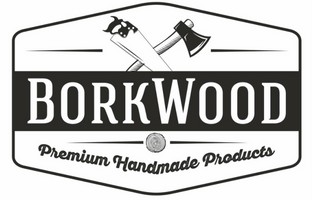Why Simplicity is the Secret Ingredient in Modern Web Design
In an era where digital competition is fierce and attention spans are short, web design must strike a balance between function and aesthetics. One of the most effective ways to achieve this balance is through simplicity. While flashy animations and packed pages might seem impressive at first glance, they often get in the way of what really matters helping users find what they need quickly and easily.
Simplicity in web design doesn’t mean removing all features or stripping down your site to bare bones. Instead, it’s about being deliberate. Every element should serve a purpose, every interaction should be intuitive, and every page should help guide the user along a clear path.
Simplicity Enhances User Experience
When someone lands on your site, you have just a few seconds to capture their attention and make navigation intuitive. Complex layouts or confusing navigation structures can frustrate users and cause them to leave. A simple interface, on the other hand, reduces friction and makes it easier for visitors to achieve their goals whether that’s reading an article, signing up for a newsletter, or purchasing a product.
Simplicity also aligns well with known usability principles. According to Jakob Nielsen’s usability heuristics, design should be minimalist and avoid unnecessary information that doesn’t directly help users. The fewer cognitive barriers there are, the smoother the experience will feel.
Clearer Branding With Less Noise
When your website layout is clean, your brand stands out more. A busy or cluttered design can overshadow key visual elements like your color scheme, typography, and most importantly, your logo. In minimalist design, the logo becomes a focal point that communicates brand identity instantly.
Your logo tells users who you are and, ideally, what you offer. With tools like logo maker, even businesses without a design team can create a polished and memorable logo. Once created, this logo fits naturally into a simple web layout, helping build brand recognition with every pageview.
Faster Load Times for Better Engagement
Every extra second your site takes to load increases the chances a user will leave. Simplicity plays a key role here fewer graphics, fewer scripts, and cleaner code lead to faster performance. Sites that load quickly retain visitors longer, get higher engagement, and perform better in search engine rankings.
Search engines like Google factor in page speed when determining where your site appears in search results. A minimalist site is easier to optimize and typically performs better across devices and internet connections.
Optimized for Mobile Devices
Mobile-first design is no longer just a recommendation; it’s a necessity. With the majority of web traffic now coming from smartphones and tablets, ensuring your site looks great and works well on all screen sizes is critical. Simple, responsive designs adapt more easily to different devices and screen resolutions.
Minimalist sites often employ flexible layouts, concise navigation, and easily tappable elements, making them more user-friendly for touch interfaces. A clean, responsive layout can drastically improve how users interact with your site on the go.
Less Is More: Reducing Cognitive Load
Cognitive load is the mental effort required to navigate a website. When users encounter too many options or excessive visual clutter, they’re forced to think more, which can lead to fatigue and frustration. Simplicity minimizes this load by presenting only what’s necessary.
For example, instead of bombarding users with ten menu options, a simpler structure might present just three or four essential categories. This not only streamlines the experience but also makes it more likely that users will engage with the content or complete the desired action.
Higher Visibility for Calls to Action
Every website is built around goals whether that’s getting a visitor to sign up, click a button, or make a purchase. In a minimalist design, calls to action (CTAs) are more visible and compelling. Without competing distractions, a single CTA can command attention and guide users to take the next step.
Contrast, spacing, and placement become more impactful when the page isn’t overcrowded. For instance, a simple button that says “Get Started” or “Try Now” is far more effective when surrounded by whitespace than buried under multiple layers of content.
Easier Maintenance Over Time
One of the most overlooked benefits of simplicity in web design is how much easier it makes ongoing maintenance. A simpler site typically uses fewer templates, less custom code, and fewer third-party plugins all of which reduces the chances of bugs, compatibility issues, and security vulnerabilities.
When updates are needed whether it’s changing a photo, adding a new section, or updating branding they’re easier to implement without disrupting the entire user experience. This means your site can evolve more efficiently as your business grows.
Creating a Stronger Emotional Connection
Minimalist design doesn’t mean emotionless. In fact, it can often convey emotion more effectively than overly complex sites. Strategic use of whitespace, harmonious color palettes, and elegant typography can evoke feelings of trust, calmness, and professionalism.
Users appreciate a design that feels “quiet” and focused it creates a sense of space and clarity that can put them at ease. This kind of emotional connection is key to building relationships with visitors and encouraging repeat engagement.
Data-Driven Simplicity
Great design is guided by real user data. With analytics tools, heatmaps, and session recordings, designers can see exactly how users are interacting with a website. This helps identify which elements are working and which can be removed or simplified.
A/B testing also supports this approach. You can test different layouts, colors, or content lengths to see what resonates most with your audience. Over time, these insights can help you refine your design to be not just simpler, but also more effective.







